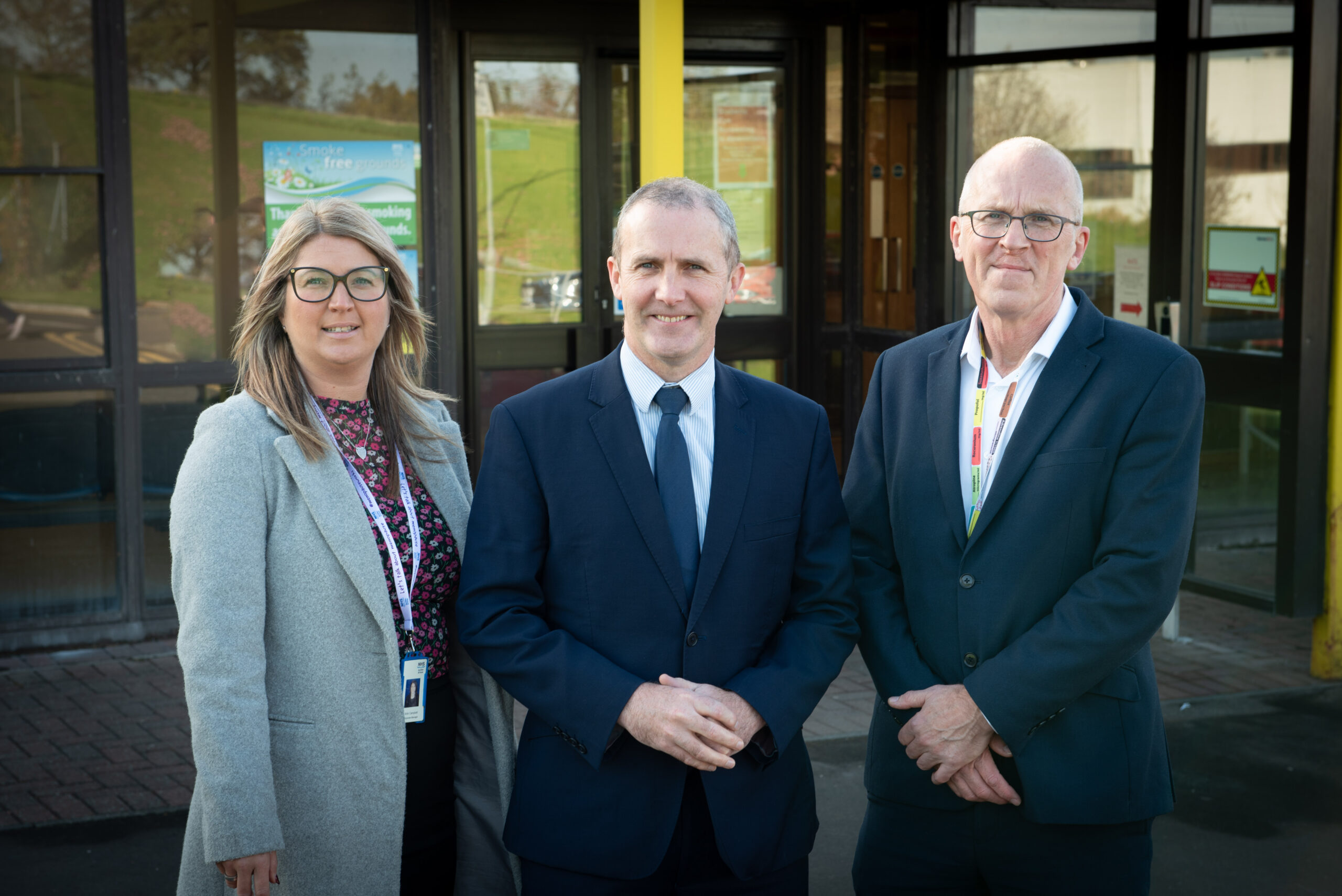Michael Matheson MSP, Cabinet Secretary for NHS Recovery, Health and Social Care, visited the Flow Navigation Centre at University Hospital Crosshouse on Monday 30 October to hear more about the work of the Ayrshire Urgent Care Service (AUCS).
The Flow Navigation Centre aims to ensure that patients who need urgent or unscheduled care are directed to the appropriate service, so that they receive the right care, in the right place, at the right time.
Within the Ayrshire Urgent Care Service (AUCS), there are a number of pathways which have been redesigned as part of the Redesign of Urgent Care Programme.
The Flow Navigation Centre (FNC) provides 24/7 direct care to patients and identifies the pathway most suited to their needs within a community setting, wherever possible. This may be directing patients to a community pharmacy or community-based service.
During the out of hours period patients may also receive care by visiting a Primary Care Treatment Centre or a clinician visiting them in their home. If a community pathway is not appropriate, patients may be directed to an appropriate secondary care service.
As well as directing patients to the most appropriate pathway for their care, the FNC also provides advice to other clinical professionals – for example, Scottish Ambulance Service or care home staff. The FNC helps to support clinical decision making and to explore alternative options for patients to try and keep them within their homely setting without the need to convey them to hospital.
Each month, only seven per cent of ambulance calls and eight per cent of calls from care home staff which are supported by the FNC result in patients attending hospital.
Vicki Campbell, Head of Primary Care and Urgent Services, explained: “The Flow Navigation Centre means that we can ensure patients receive the most appropriate care for their needs as close to home as possible. A number of our pathways have evolved working with people from across the wider health and care sector to develop a multi-disciplinary model supported by a senior clinical decision maker to best suit our patient’s needs. These pathways have been designed to ensure they are more person centred and patients get the right care, in the right place, at the right time.”
AUCS deals with around 9,500 contacts each month, with the majority coming through the GP out of hours service which are dealt with by the out of hours team. Through these integrated community pathways, only 12 per cent of those contacts need to be referred to a hospital for further care and treatment.
Michael Matheson MSP, Cabinet Secretary for NHS Recovery, Health and Social Care, said: “All around Scotland, health boards are putting in place innovative solutions to improve the flow of patients through hospitals, and to ensure people get the care they need as quickly as possible. NHS Ayrshire & Arran’s Flow Navigation Centre is an excellent example of that, and it was a pleasure to meet the staff and find out how they are helping patients day in and day out.”
Vicki Campbell added: “I’d like to thank Mr Matheson for coming along today and meeting the team. It was great to share some of the success of the Flow Navigation Centre. “As we move in to the winter period, it is important that we help as many people as possible receive the care they need as close to home as possible. Having the Flow Navigation Centre helps us to do that and reduce the need for people to attend hospital.”
